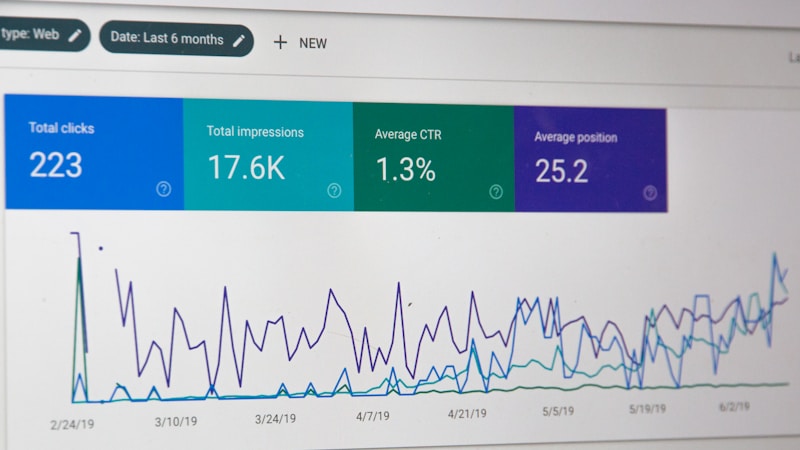Why Linen Pants Remain a Wardrobe Essential
Learn about why linen pants remain a wardrobe essential in this comprehensive guide. Discover insights, tips, and information about why linen pants remain a wardrobe essential.
AI is everywhere these days. Here's what that means in practice. On your phone, in your bank, maybe even in your car. But let's pause for a second—can we really trust it? Here's the tricky part: just because an algorithm is "smart" doesn't mean it's trustworthy. People want to know why AI makes decisions, whether it's fair, and if it can be relied on. That's what we're talking about when we say AI trust. I'll walk you through practical ways to build trust in AI. We'll cover digital ethics, transparency, and—some—real-world—strategies that organizations can start using today. For foundational strategies, check the section on Core Principles of AI Trust. TL;DR Summary: Trust in AI doesn't happen automatically. It takes transparency, ethics, and real-world actions to make AI systems reliable and accepted. shows how.

Building trust isn't some magic formula. Here's what that means in practice. It's a mix of transparency, ethics, and accountability. ## AI Transparency Transparency is about making AI understandable. Some practical tips: - Explainable AI: Let people see why decisions are made - Clear Communication: Don't just. release a tool—explain it - Regular Audits: Check for biases or mistakes from time to time. Tip: Tools like SHAP or LIME can help explain AI decisions in ways humans can digest.



Here's what organizations can do—real steps, not theory: 1. Here's what that means in practice. Engage Stakeholders Early: Involve employees, customers, regulators 2. Communicate Limitations: Be honest about AI's capabilities 3. Use Explainability Tools: Make decisions clear and understandable 4. Audit Regularly: Catch biases or errors before they become problems 5. Educate Users: Confidence comes from understanding

Healthcare: IBM Watson for Oncology explains treatment suggestions via dashboards. Finance: JP Morgan's COiN platform visualizes AI decision paths for compliance. Public Sector: Singapore's AI traffic management tools provide dashboards to the public. See? Trust is achievable when transparency and ethics are prioritized.

It's not all smooth sailing: - Complexity: Some AI models are tricky to explain - Rapid. Change: AI evolves faster than governance rules - Public Skepticism: Misuse in media erodes trust The solution? Educate, audit, and communicate—constantly. Here's what that means in practice.

Looking forward: - Standardization: Global ethics and transparency standards are emerging - Collaboration: Partnerships between public. and private sectors will help - User Empowerment: Give people tools to question or override AI. decisions The 2025 OECD AI Policy Observatory says: AI trust is becoming a competitive advantage. Here's what that means in practice.

Health Disclaimer: is for informational purposes only and is not medical advice. Always consult a qualified healthcare professional for personal guidance. > Finance Disclaimer: Educational content only. This is not financial advice. Please consult a licensed professional for decisions. > Compliance note: Health Disclaimer: is for informational purposes only and is not medical advice. Always consult a qualified healthcare professional for personal guidance. > Finance Disclaimer: Educational content only. This is not financial advice. Please consult a licensed professional for decisions. > Compliance note: >. Health Disclaimer: is for informational purposes only and is not medical advice. Always consult a qualified healthcare professional for personal guidance. > Finance Disclaimer: Educational content only. This is not financial advice. Please consult a licensed professional for decisions. > Compliance note: Health Disclaimer: is for informational purposes only and is not medical advice. Always consult a qualified healthcare professional for personal guidance. > Finance Disclaimer: Educational content only. This is not financial advice. Please consult a licensed professional for decisions. > Compliance note: > Health. Disclaimer: is for informational purposes only and is not medical advice. Always consult a qualified healthcare professional for personal guidance. > Finance Disclaimer: Educational content only. This is not financial advice. Please consult a licensed professional for decisions. > Compliance note: Health Disclaimer: is for informational purposes only and is not medical advice. Always consult a qualified healthcare professional for personal guidance. > Finance Disclaimer: Educational content only. This is not financial advice. Please consult a licensed professional for decisions. > Compliance note: Health Disclaimer: is for informational purposes only and is not medical advice. Always consult a qualified healthcare professional for personal guidance. > Finance Disclaimer: Educational content only. This is not financial advice. Please consult a licensed professional for decisions. > Compliance note: >. Health Disclaimer: is for informational purposes only and is not medical advice. Always consult a qualified healthcare professional for personal guidance. > Finance Disclaimer: Educational content only. This is not financial advice. Please consult a licensed professional for decisions. > Compliance note: Health Disclaimer: is for informational purposes only and is not medical advice. Always consult a qualified healthcare professional for personal guidance. > Finance Disclaimer: Educational content only. This is not financial advice. Please consult a licensed professional for decisions.
Compliance note: Health Disclaimer: This article is for informational purposes only and is not medical advice. Always consult a qualified healthcare professional for personal guidance. Finance Disclaimer: Educational content only. This is not financial advice. Please consult a licensed professional for decisions.
Learn about why linen pants remain a wardrobe essential in this comprehensive guide. Discover insights, tips, and information about why linen pants remain a wardrobe essential.
Learn about why guardrails matter when using artificial intelligence in this comprehensive guide. Discover insights, tips, and information about why guardrails matter when using artificial intelligence.
Learn about what is few-shot prompting? a guide to ai language models in this comprehensive guide. Discover insights, tips, and information about what is few-shot prompting? a guide to ai language models.
Learn about user-generated content strategies for digital marketing success in this comprehensive guide. Discover insights, tips, and information about user-generated content strategies for digital marketing success.
Learn about understanding wake windows for better daily routines in this comprehensive guide. Discover insights, tips, and information about understanding wake windows for better daily routines.
Learn about understanding multimodal ai in everyday applications in this comprehensive guide. Discover insights, tips, and information about understanding multimodal ai in everyday applications.